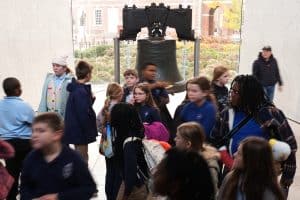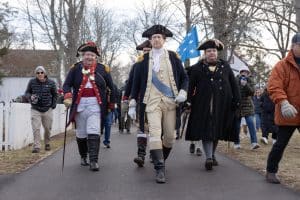Written by Gregory A. Daddis
Another American holiday. Another mass shooting. This time in Highland Park, Illinois, where at least six lay dead and more than twenty others have been injured. We seem destined to both celebrate and mourn these days.
While the May 24 tragedy in Uvalde, Texas, where 19 schoolchildren and two teachers were murdered, helped instigate the nation’s first gun control legislation in decades, the recent U.S. Supreme Court ruling against a New York law restricting concealed weapons suggests political battles over the Second Amendment will endure.
With little political consensus on how to impede future warlike scenarios, it also seems likely that victims’ families will be left, as they have been in the past, to grieve mostly on their own.
Increasingly, some commentators argue that if we are to break this deadly cycle, then we must see the dead. We need to be faced with the devastation wrought by weapons of war and use our sadness, anger, and disgust as motivation to ensure that atrocities like Uvalde won’t happen again.
As long as we don’t see gruesome, horrific photos, some contend, it is far too easy for us to compartmentalize. Without graphic images, the dead will forever remain abstract. President Joe Bidenurged an “end to the carnage,” but what does that carnage look like?
History offers an example of how effective this exposing of the dead might be.
In September 1943, Life magazine published a story titled “Three Americans.” The editorial included a full-page photograph by famed photojournalist George Strock of three dead Americans lying face down on Buna beach in Papua New Guinea. Because of censorship concerns, it would be the first time U.S. war dead were shown in a major magazine during World War II.
The editors at Life argued they were not trying to be “morbid” or to “hurt people” by printing the photograph. Rather, the reason was that “words are never enough” to “feel what it is like, what actually happens.”
Sixty years later, as U.S. forces invaded Iraq, Time columnist Joe Klein argued that Americans needed that courage once again. To Klein, when journalists edited the truth, they tended to “sanitize the cataclysmic impact of high-powered munitions upon human flesh.” What Strock’s photo offered for Americans embarking on yet another war was the chance to see the “unadorned bleakness” of combat’s aftermath.
Unsurprisingly, U.S. editors had less compunction about printing pictures of nonwhite victims of war. One of the most iconic images of the U.S. war in Vietnam was taken by photographer Nick Ut and titled “Napalm Girl.” Ut captured a young Vietnamese girl, Phan Thị Kim Phúc, running toward his camera, her body covered with third-degree burns as she screamed in agony.
Decades later, a 2015 photograph of two-year-old Syrian refugee Aylan Kurdi captured the world’s attention and brought into focus a humanitarian crisis caused by war. Kurdi’s body had been washed ashore near the Turkish town of Bodrum, replicating the three Americans at Buna, his face buried in the sand.
Amid another year of mass shootings, Americans once more are debating whether they should face images of their own children who have been murdered by weapons of war right here at home. Whether they must be confronted with the carnage. Whether they must see it, not just read about it.
Grieving parents should, without question, have a say in deciding whether images of their murdered children are released to the public. There is a difference between showing wartime photographs of adult soldiers and photos of children. The editors at Life magazine, however, believed that images could help prod the public to action, grisly though those photographs may be.
Perhaps we need to witness the dead once again. Perhaps we need to listen to the editors at Life, who maintained in 1943 that “where these boys fell, a part of freedom fell: we must resurrect it in their name.”
Gregory A. Daddis is professor of history and the U.S.S. Midway Chair in Modern U.S. Military History at San Diego State University
This column was produced for the Progressive Perspectives, which is run by The Progressive magazine, and distributed by Tribune News Service.






